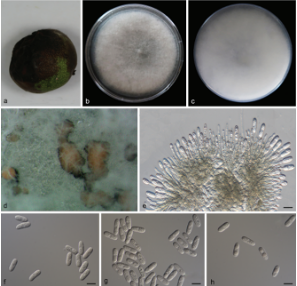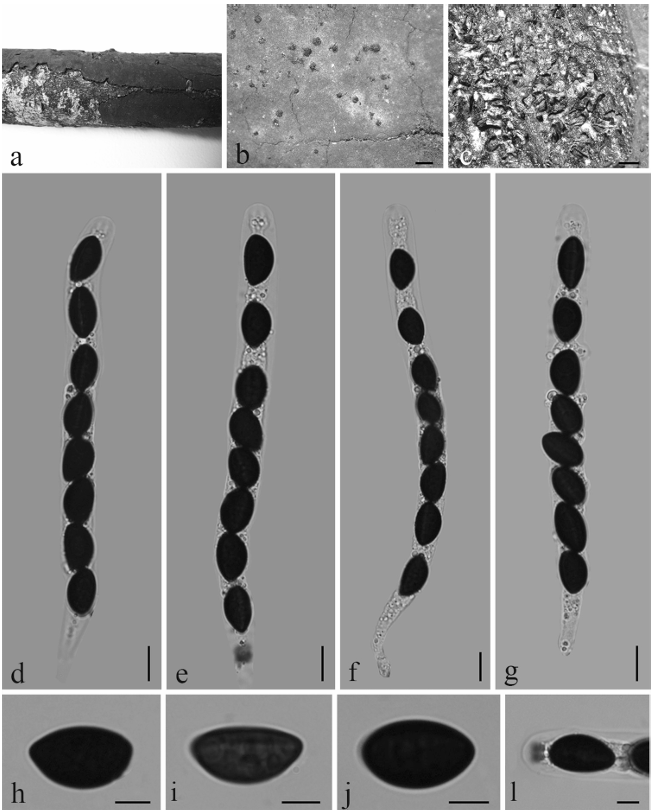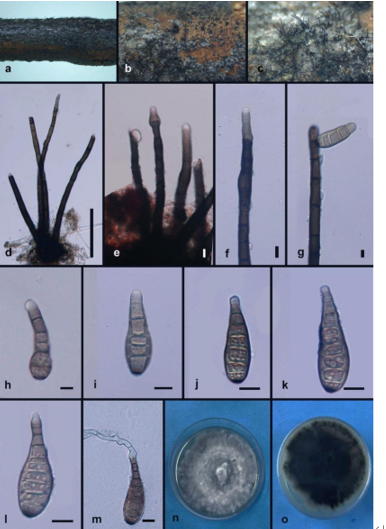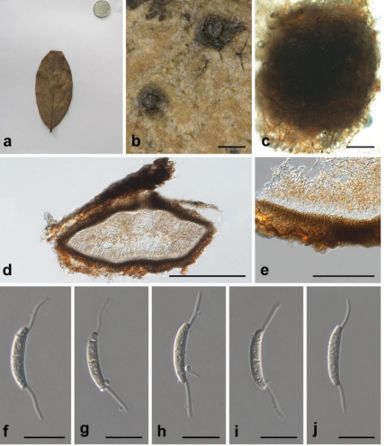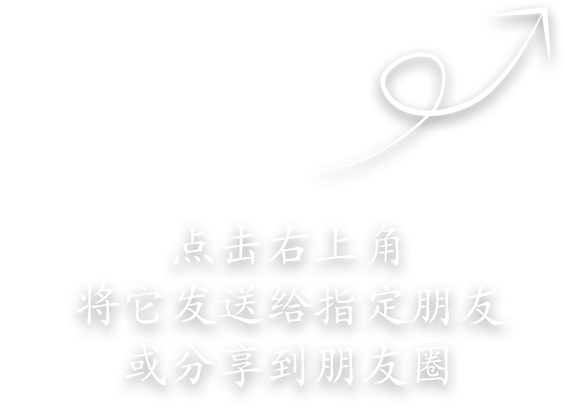Nemania rubi Y.H. Pi & Q.R. Li, sp. nov. 2021
MycoBank No: 840091
Holotype: GMBC0064, ex-type living culture; KUN-HKAS 112695, isotype).
Morphological description
Sexual morph: Stromata effused-pulvinate, irregular shape, multi-peritheciate, scattered, separate to confluent into larger compound stromata, 2.5–15 mm long × 2–9 mm wide × 0.4–0.6 mm thick; surface blackish, weakly carbonaceous, with unexposed perithecial contours, uneven and irregular, internally whitish between ascomata, tissue, soft-textured; not releasing a coloured pigment in 10% KOH. Perithecia 0.25–0.35 mm diam. × 0.2–0.3 mm high, subglobose. Ostioles papillate, black, obtusely conical to hemispherical, without encircling disc. Asci 85–160 × 7–11 μm (av. = 130 × 9 μm, n = 30), 8-spored, unitunicate, cylindrical, longstipitate, spore-bearing parts 60–85 µm long, apically rounded with a J+, long-cylindrical apical apparatus, 1.5–2.5 × 2–3 µm (av. = 1.5 × 2.5 µm, n = 30). Ascospores 9–12 × 4–6 μm (av. = 10 × 4.8 μm, n = 30), uniseriate to irregularly-biseriate unicellular, smooth, olivaceous when fresh, turning brown to medium brown after a period of time, ellipsoidinequilateral with often broadly-rounded ends, lacking a germ slit sheath and appendage; perispore indehiscent in 10% KOH.
Asexual morph: Undetermined.
Cultures: Colonies grow slowly on PDA medium with a diameter of 5 cm after 10 days at 25 °C. Colonies surface were white to pale orange, circular, cottony, low, dense, cottony mycelium, reverse with light orange mycelium. Not sporulating on OA nor on PDA.
Habitat: on dead wood
Distribution: China, Guizhou Province, Pingba County (26°25'10.24"N, 106°24'25.21"E, altitude: 1052 m),
GenBank Accession: its MW851884; rpb2 MW836060; tubulin MW836022; catin MW836041 . its MW851885 ; rpb2 MW836059; tubulin MW836021; catin MW836040.
Notes: In our phylogenetic analysis, Nemania rubi formed a distinct branch, which is sister to N. changningensis and N. caries (Fig. 1). In morphology, N. rubi is similar to N. caries, but is distinct in having a long-cylindrical apical apparatus and the inequilateral ascospores lacking a germ slit (Miller 1961; Ju and Rogers 2002). In addition, the perithecia of N. caries are obovoid (0.3–0.6 × 0.5–0.7 mm) and its height is greater than the width (Tang et al. 2007). The ascomata surface of N. rubi ascomata is uneven with inconspicuous perithecial mounds, which is similar to those of N. plumbea, but the latter has larger ascospores (13–16 × 5.4–6.6 µm) with germ slits on the concave side (Tang et al. 2007)
Reference: [1] Song, Y. J. , & Li, S. Q. . (2008). A taxonomic study of chinese nematogmus species (araneae, linyphiidae). Organisms, diversity, & evolution(4), 8.
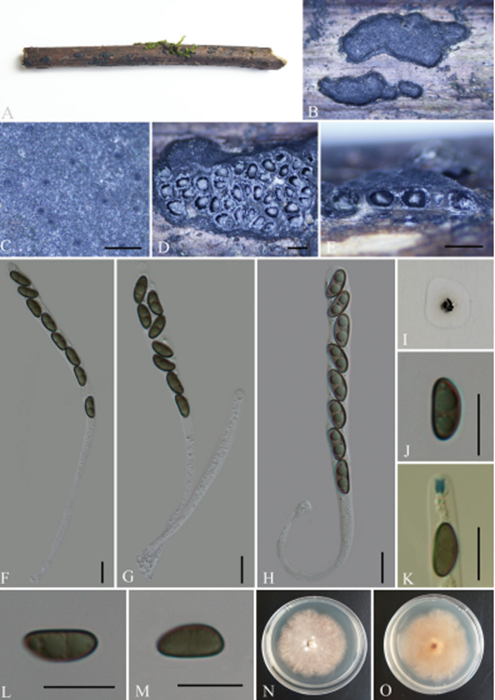
Nemania rubi (GMB0064, holotype) A type material B, C stromata on surface of host D transverse sections of stromata E longitudinal section of stromata F–H asci with ascospores I pigments in 10% KOH J ascospore with indehiscent perispore in 10% KOH K ascus apical apparatus (stained in Melzer’s Reagent) L,M ascospores N, O colonies on PDA (N-upper, O-lower). Scale bars: 0.5 mm (C–E); 10 μm (F–H, J–M).


